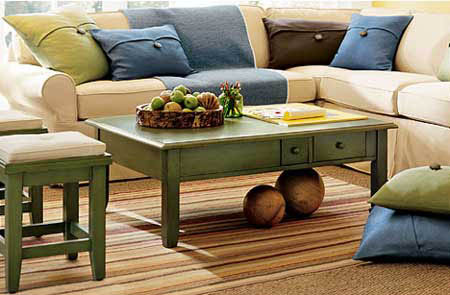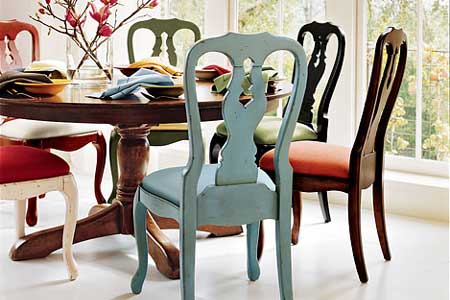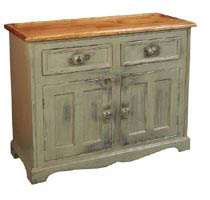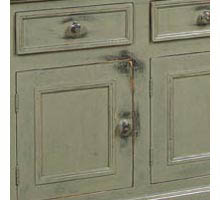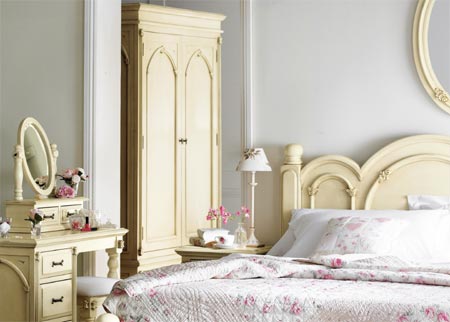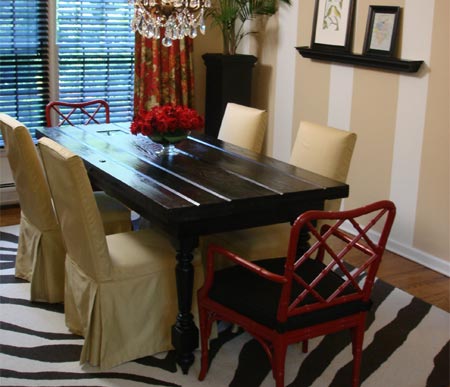Painted furniture... love it or hate it
If you're in the market for new furniture or looking for a way to spice up one or two pieces you already have, paint may just be the answer you're looking for. When applied correctly, paint can alter the very nature of a piece.
Buying new furniture can expensive; consider painting furniture that you already have to save money and time. Give dated furniture a new lease on life - or create the look of an antique in hours, not years.
The preparation techniques for painting wood furniture vary somewhat, depending on whether the surface is already painted or not.
Existing paint must be sanded to provide the best surface for paint to adhere. You'll also have to carefully scrape off flaked or damaged paint and sand the edges of the remaining paint so the new coating won't highlight the edges of the old paint.
Unpainted wood also requires sanding to a smooth surface. You can tell when the surface is smooth enough by using cotton gloves. Once you've sanded and dusted the surface to a level you believe is satisfactory (using successively finer sandpaper grits), gently draw a gloved hand across it. If the surface needs more sanding, the cotton glove will catch on the wood fibres.
Painting Wood Furniture
Preparation
For painted wood, depending upon how many coats of paint are on the wood, start with an Orbital Sander using 60- or 80-grit sanding pads. When you start to see the wood underneath, it's time to change to 120-grit sandpaper to remove the remaining paint.
Finish off with 180- or 240-grit sandpaper. Wipe the dust off the wood using a cloth dampened with mineral turpentine. For new, unfinished wood, start with 180-grit sanding pads. Remember to sand with the grain of the wood, not against it. Wipe the dust off the wood using a cloth dampened with mineral turpentine.
Prime
When working with painted wood, prime any bare spots and let them dry. For new wood, prime the entire surface with a spray primer recommended by your paint dealer.
Paint
Spray or paint the furniture in the colour of your choice, using a Rust-Oleum spray, acrylic or enamel paint.
Distress or age
There are so many simple ways to make new furniture look like an antique - in a matter of hours. The easiest by far is to use a distressing technique. Paint the project in your choice of colour and leave to dry overnight. There are various methods that you can use to distress or age a piece...
Guilder's paste
Apply small amounts of Guilder's paste to areas that you want to distress - around edges, on handles - to create a worn and aged look. Guilder's paste dries very quickly and is polished with a soft cloth. You can purchase Guilder's paste in a variety of finishes: gold, bronze, copper, silver, black, etc, at art and craft shops.
Distressed
Use 120-grit sandpaper to sand painted areas back to the wood to create a distressed look on new or old furniture. The art of this technique is in knowing where and how much to sand. Sand lightly around edges and scuff any detailed areas. If you take off too much paint, sand with 180-grit paper and paint over to try again!
Don't be afraid to experiment - you can always sand smooth and start again if you are not happy with the look. Painting wood furniture allows you to completely change the look and transform any piece of furniture - for any room in your home.
There is no rule about what you can and cannot paint, what colour you can paint it, or how you want to finish your painted furniture. If you have an idea in mind, and you follow the correct preparation and painting methods, you can paint any furniture to suit your home, whether your decor is contemporary, traditional or country cottage.

